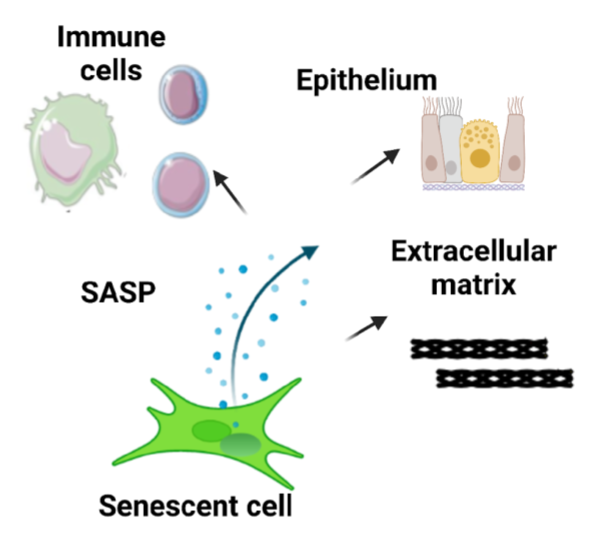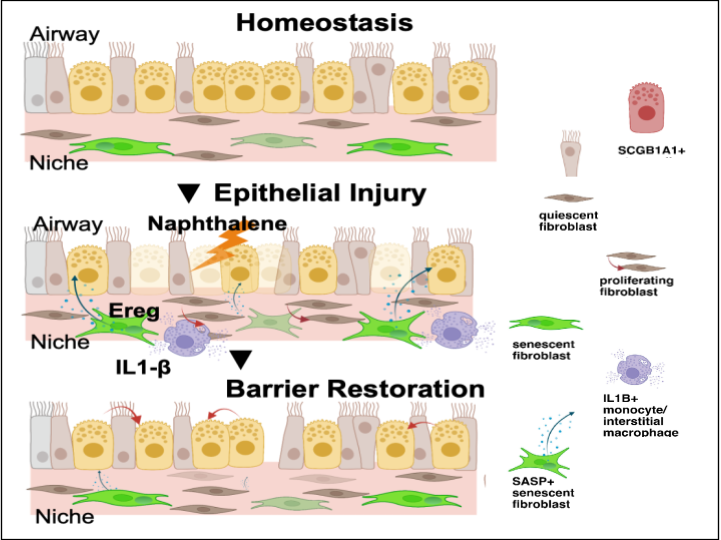What is Cellular Senescence?
Cellular senescence is an acquired state triggered by environmental stressors or tumor evasion, characterized by a loss of proliferative capacity and an enhanced ability to regulate microenvironments through the senescence-associated secretory phenotype (SASP). A key feature of senescent cells is the upregulation of the cyclin inhibitor p16INK4a, which accumulates with age. While removing p16INK4a-expressing cells can slow aging, it also impairs wound healing, highlighting the complex roles of p16INK4a in homeostasis, regeneration, and aging. Despite its significance, the dynamic nature of the SASP and its impact on tissue microenvironments and cellular responses remains poorly understood. Our team aims to address this gap by investigating the behavior and effects of senescent cell secretions in lung tissues, utilizing advanced mouse models, sequencing technologies, and quantitative proteomics to explore their roles in lung injury and repair.

Projects

1. What roles do alveolar p16+ fibroblasts play in promoting repair of alveolar type 2 (AT2) cells?
We discovered that p16INK4a-expressing fibroblasts enhance airway epithelial regeneration both in vitro and in vivo. These findings strongly suggest that fibroblasts expressing p16INK4a induce a SASP conducive to driving epithelial regeneration. However, it remains unclear whether this supportive quality is limited to fibroblasts surrounding major airways. Therefore, we are investigating the hypothesis that p16INK4a-expressing fibroblasts activate a region-specific regenerative program tailored to support local stem cells.
2. What is the role of p16INK4a in reprogramming the fibroblast secretome?
We have demonstrated that p16INK4a expression is essential for inducing protein secretion in fibroblasts. By manipulating p16INK4a expression using our established tools and combining transcriptomic and proteomic approaches, we aim to define p16INK4a’s ability to reprogram the SASP in fibroblasts to promote regeneration in neighboring stem cells. Our goal is to determine whether protein secretion depends on p16INK4a expression under homeostatic conditions and during injury.


